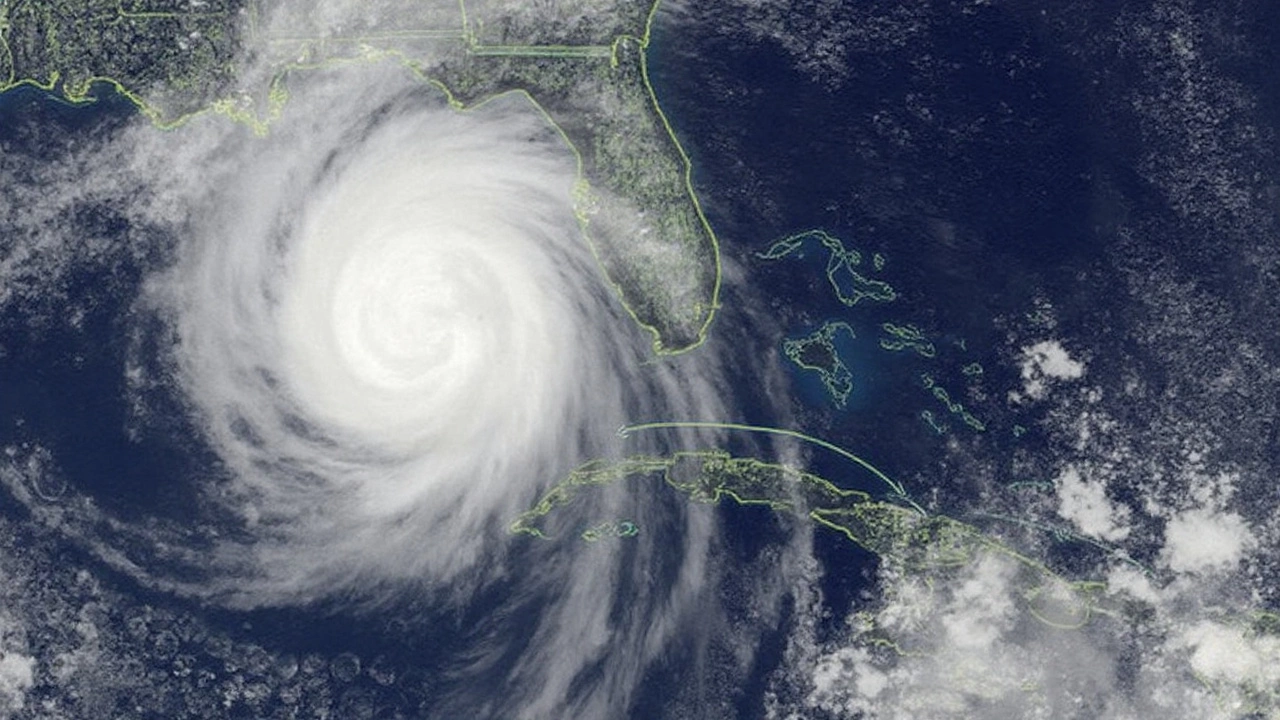Hurricane Erin Unleashes Chaos in Caribbean and Poses Major Risk to US Coast
Erin Pounds Caribbean, Leaves Widespread Damage and Fear
Hurricane Erin is making history as the first major storm of the 2025 Atlantic season, and it’s tearing through the Caribbean with ferocity. Packing winds up to 130 mph, Erin has been beating down islands since the weekend, knocking out power, flooding homes, and turning normal life upside down.
Puerto Rico has taken a hard hit. Over 80,000 residents woke up powerless after Erin’s outer bands swept in, drowning roads and neighborhoods under heavy rain. The streets flooded fast, with rescue crews stretched thin and flood watches still in place for Puerto Rico and the Virgin Islands. People are boarding up homes and trying to ride out what feels like the longest few days of the year.
This wasn’t just a sudden burst, either. Erin’s origins go back to Cape Verde, where heavy rains from its early stages brought utter devastation. São Vicente island, for example, saw skies open up—178 millimeters of rain in five hours, flooding entire communities and claiming nine lives. The government there declared a disaster for both São Vicente and Santo Antão as families and businesses tried to recover from the overwhelming loss. The emotional toll has been just as tough as the physical damage.

Storm Picks Up Steam, Worries Mount Along US East Coast
What’s really got people nervous, though, is Erin’s unpredictable nature. The storm was born as a tropical wave on August 11 and wasted no time ramping up. By the 15th, it was already a hurricane, and then overnight, it exploded into Category 5 territory with 160 mph winds and a massive drop in pressure—915 millibars, tighter than a hang drum. Since then, it’s seesawed between Category 3 and 4 as wind patterns and pressure changes mess with its structure. Those quick shifts are what make forecasting so nerve-wracking for meteorologists and everyone in the storm’s shadow.
As of now, Erin is hovering about 695 miles southwest of Bermuda and 805 miles from Cape Hatteras, North Carolina, inching northwest at 10 mph. That might sound far, but these storms move quicker than many expect, dragging dangerous weather behind them. The Bahamas narrowly missed a disaster as Erin passed east, but storms alerts remain. Rain is expected to soak the islands with up to six inches, and wind gusts threaten to damage infrastructure through Tuesday.
For the U.S. East Coast, especially North Carolina’s Outer Banks, officials are not taking chances. Even though Erin isn’t expected to make direct landfall, that’s little comfort when forecasters warn of four-foot storm surges, high tides, and evacuation orders. The National Hurricane Center put out multiple warnings, pointing at the risk of 10-15 foot waves, or even 20 feet in places where the winds and currents work together. Coastal flooding and ripped-up beaches are real possibilities, and people who’ve been through storms like this know what that means for their homes and businesses.
Evacuations have kicked off in certain parts of the coast, and some are scrambling to get their valuables—pets, photos, important documents—out of harm’s way. Emergency crews are on standby, and everything from school closures to gas shortages is hitting the region. Colonel Charles Decker from the U.S. Army Corps of Engineers stressed how serious the coordination effort is, calling out FEMA and local teams for working around the clock. When the storm track is still uncertain, there’s a certain anxiety that just doesn’t go away until Erin finally moves on.
Looking ahead, Erin is expected to stay a major force through mid-week, curving between the U.S. coast and Bermuda before heading back out to open waters. Even after it passes, forecasters say life-threatening surf and rip currents will linger along the entire East Coast. Swimmers, surfers, and even cautious beachgoers are all being urged to stay away from the waves for days as Erin’s energy keeps churning up the ocean.
This storm is already the fifth named this season, but it’s the one setting the tone for what could be an especially active—and anxious—set of months for everyone living near the Atlantic. With the reminders of battered beaches and waterlogged neighborhoods fresh in memory, nobody’s taking Erin lightly.





